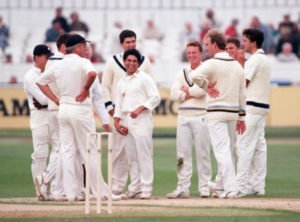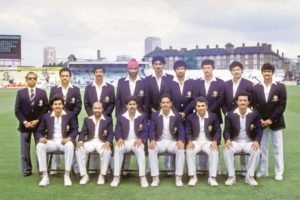Cricket in India isn’t just a sport it’s a cultural phenomenon, a shared heartbeat, and yes, sometimes a religion. From the dusty fields of small towns to stadiums that roar with tens of thousands of fans, cricket has a way of uniting communities, transcending class, region, and language.
From Colonial Roots to National Obsession
While cricket originated in England, India adopted it and made it its own. Colonial era clubs and East Indian settlements introduced the sport, but local games like Gilli Danda hinted that Indians were always ready to embrace beanball games. By the 1950s, India recorded its first Test series victory against England in 1952, planting the seed for a national obsession that would only grow.
Cricket may not be India’s “official national game,” but the intensity of its fandom rivals any global sport. Movies like Lagaan immortalized cricket as a symbol of pride, resistance, and community spirit, showing how much the sport resonates beyond just the scoreboard.
Superstar Players, Mass Devotion
One reason cricket dominates in India is the players themselves. Legends like Kapil Dev, Sachin Tendulkar, MS Dhoni, and Virat Kohli became more than athletes Hey became icons. Fans didn’t just follow matches; they followed personalities, stories, and lives.
Television played a huge role. The 1980s saw cricket broadcast into every household, turning players into household names and the sport into a unifying force. The 1983 World Cup victory solidified cricket as a national obsession, proving that underdogs with skill and heart could achieve the extraordinary.
“Cricket in India is less about the sport and more about identity, joy, and togetherness,” says sports journalist Ananya Iyer.
Infrastructure, Governance, and Popularity
Cricket’s continued dominance is also a story of infrastructure and organization. The Board of Control for Cricket in India (BCCI) operates with autonomy, ensuring resources, sponsorships, and global tournaments thrive. While sports like football and tennis are growing in India, cricket remains the gold standard, thanks to:
- Worldclass stadiums and facilities in metro and tier2 cities.
- Strong grassroots programs feeding talent into national teams.
- Media coverage that spans TV, digital streaming, and social platforms.
It’s a sport that offers not just games, but stories of heroism, drama, and emotional highs something fans crave year-round.
Cricket Beyond the Field
In 2025, cricket is also evolving with India’s diverse social landscape. Women’s cricket is gaining prominence, with Indian women cricketers becoming icons for queer and feminist communities alike. The IPL and other leagues increasingly embrace inclusive campaigns, LGBTQ+ safe spaces, and social justice initiatives, making the sport more than a gambit’s a platform for change.
Cricket in India now isn’t just about men’s Test matches or World Cups; it’s a celebration of resilience, talent, and representation across gender, region, and community.
Practical Takeaways
- Follow both men’s and women’s cricket the latter is breaking barriers and inspiring queer and young fans.
- Support inclusive cricket leagues that promote safe spaces and diversity.
- Engage with grassroots cricket initiatives to see the future of Indian talent.
- Celebrate players as people their impact extends beyond runs and wickets to social influence.
Conclusion: Cricket, Culture, and Community
Cricket in India isn’t just a sport it’s a mirror of society, reflecting hope, pride, and shared joy. Even in 2025, amidst new sports and evolving lifestyles, cricket continues to capture hearts, inspire dreams, and create safe spaces for fans and players alike. Whether on the field, in stadiums, or on screens, cricket proves that some passions are simply timeless.






